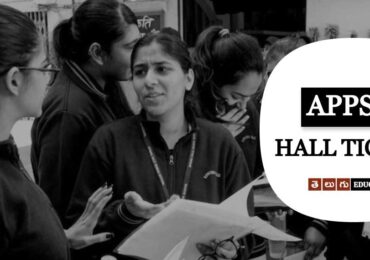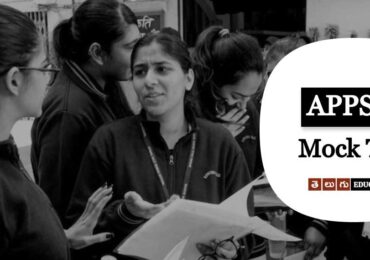STATISTICS-IV
(DESCRIPTIVE TYPE)
(Equal number of questions i.e. 50% weightage from all the subsections below and candidates have to choose any two subsections and answer) (i) Operations Research and Reliability
Definition and Scope of Operations Research: phases in Operation Research, models and their solutions, decision-making under uncertainty and risk, use of different criteria, sensitivity analysis. Transportation and assignment problems. Bellman’s principle of optimality, general formulation, computational methods and application of dynamic programming to LPP. Decision-making in the face of competition, two-person games, pure and mixed strategies, existence of solution and uniqueness of value in zero-sum games, finding solutions in 2x2, 2xm and mxn games. Analytical structure of inventory problems, EOQ formula of Harris, its sensitivity analysis and extensions allowing quantity discounts and shortages. Multi-item inventory subject to constraints. Models with random demand, the static risk model. P and Q- systems with constant and random lead times.
Queuing models – specification and effectiveness measures. Steady-state solutions of M/M/1 and M/M/c models with associated distributions of queue-length and waiting time. M/G/1 queue and Pollazcek-Khinchine result. Sequencing and scheduling problems. 2-machine n-job and 3-machine n-job problems with identical machine sequence for all jobs Branch and Bound method for solving travelling salesman problem. Replacement problems – Block and age replacement policies. PERT and CPM – basic concepts. Probability of project completion. Reliability concepts and measures, components and systems, coherent systems, reliability of coherent systems.
Life-distributions, reliability function, hazard rate, common univariate life distributions – exponential, weibull, gamma, etc. Bivariate exponential distributions. Estimation of parameters and tests in these models. Notions of aging – IFR, IFRA, NBU, DMRL and NBUE classes and their duals. Loss of memory property of the exponential distribution. Reliability estimation based on failure times in variously censored life-tests and in tests with replacement of failed items. Stress-strength reliability and its estimation.
(ii) Demography and Vital Statistics: Sources of demographic data, census, registration, ad-hoc surveys, Hospital records, Demographic profiles of the Indian Census. Complete life table and its main features, Uses of life table. Makehams and Gompertz curves. National life tables. UN model life tables. Abridged life tables. Stable and stationary populations. Measurement of Fertility: Crude birth rate, General fertility rate, Age specific birth rate, Total fertility rate, Gross reproduction rate, Net reproduction rate. Measurement of Mortality: Crude death rate, Standardized death rates, Age-specific death rates, Infant Mortality rate, Death rate by cause. Internal migration and its measurement, migration models, concept of international migration. Net migration. International and postcensal estimates. Projection method including logistic curve fitting. Decennial population census in India.
(iii) Survival Analysis and Clinical Trial: Concept of time, order and random censoring, likelihood in the distributions – exponential, gamma, Weibull, lognormal, Pareto, Linear failure rate, inference for these distribution. Life tables, failure rate, mean residual life and their elementary classes and their properties. Estimation of survival function – actuarial estimator, Kaplan – Meier estimator, estimation under the assumption of IFR/DFR, tests of exponentiality against non-parametric classes, total time on test.
Two sample problem – Gehan test, log rank test. Semi-parametric regression for failure rate – Cox’s proportional hazards model with one and several covariates, rank test for the regression coefficient. Competing risk model, parametric and non-parametric inference for this model. Introduction to clinical trials: the need and ethics of clinical trials, bias and random error in clinical studies, conduct of clinical trials, overview of Phase I – IV trials, multicenter trials.
Data management: data definitions, case report forms, database design, data collection systems for good clinical practice. Design of clinical trials: parallel vs. cross-over designs, cross-sectional vs. longitudinal designs, review of factorial designs, objectives and endpoints of clinical trials, design of Phase I trials, design of single-stage and multi-stage Phase II trials, design and monitoring of phase III trials with sequential stopping, Reporting and analysis: analysis of categorical outcomes from Phase I – III trials, analysis of survival data from clinical trials.
(iv) Quality Control: Statistical process and product control: Quality of a product, need for quality control, basic concept of process control, process capability and product control, general theory of control charts, causes of variation in quality, control limits, sub grouping summary of out of control criteria, charts for attributes p chart, np chart, c-chart, V chart, charts for variables: R, ( X ,R), ( X ,σ) charts. Basic concepts of process monitoring and control; process capability and process optimization. General theory and review of control charts for attribute and variable data; O.C. and A.R.L. of control charts; control by gauging; moving average and exponentially weighted moving average charts; Cu-Sum charts using V-masks and decision intervals; Economic design of X-bar chart. Acceptance sampling plans for attributes inspection; single and double sampling plans and their properties; plans for inspection by variables for one-sided and two sided specification.
(v) Multivariate Analysis: Multivariate normal distribution and its properties. Random sampling from multivariate normal distribution. Maximum likelihood estimators of parameters, distribution of sample mean vector. Wishart matrix – its distribution and properties, distribution of sample generalized variance, null and non-null distribution of multiple correlation coefficients. Hotelling’s T2 and its sampling distribution, application in test on mean vector for one and more multivariate normal population and also on equality of components of a mean vector in multivariate normal population. Classification problem: Standards of good classification, procedure of classification based on multivariate normal distributions. Principal components, dimension reduction, canonical variates and canonical correlation — definition, use, estimation and computation.
(vi) Design and Analysis of Experiments: Analysis of variance for one way and two way classifications, Need for design of experiments, basic principle of experimental design (randomization, replication and local control), complete analysis and layout of completely randomized design, randomized block design and Latin square design, Missing plot technique. Split Plot Design and Strip Plot Design. Factorial experiments and confounding in 2n and 3n experiments. Analysis of covariance. Analysis of non-orthogonal data. Analysis of missing data.
(vii) Computing with C and R : Basics of C: Components of C language, structure of a C program, Data type, basic data types, Enumerated data types, Derived data types, variable declaration, Local, Global, Parametric variables, Assignment of Variables, Numeric, Character, Real and String constants, Arithmetic, Relation and Logical operators, Assignment operators, Increment and decrement operators, conditional operators, Bitwise operators, Type modifiers and expressions, writing and interpreting expressions, using expressions in statements. Basic input/output.
Control statements: conditional statements, if - else, nesting of if - else, else if ladder, switch statements, loops in c, for, while, do - while loops, break, continue, exit ( ), goto and label declarations, One dimensional two dimensional and multidimensional arrays. Storage classes: Automatic variables, External variables, Static variables, Scope and lifetime of declarations.
Functions: classification of functions, functions definition and declaration, assessing a function, return statement, parameter passing in functions. Pointers (concept only). Structure: Definition and declaration; structure (initialization) comparison of structure variable; Array of structures : array within structures, structures within structures, passing structures to functions; Unions accessing a union member, union of structure, initialization of a union variable, uses of union. Introduction to linked list, linear linked list, insertion of a node in list, removal of a node from list. Files in C: Defining and opening a file, input – output operation on a file, creating a file, reading a file. Statistics Methods and techniques in R









